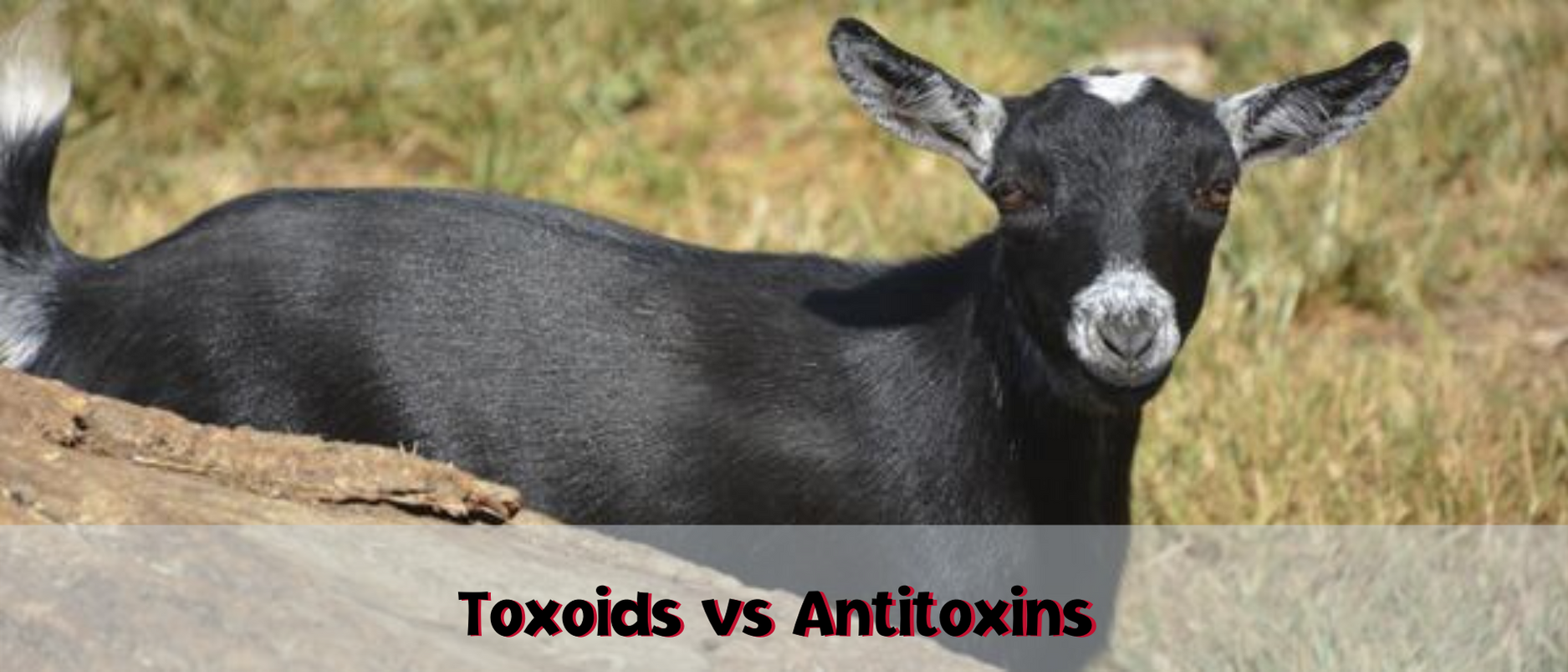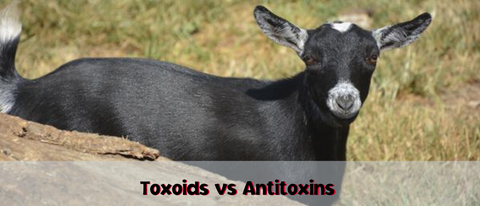Your Cart is Empty

April 01, 2019

When giving injections to your dairy goats, it is important to understand the difference between a Toxoid and an Antitoxin.
A toxoid is a vaccine; it is used to prevent disease.
An antitoxin is a treatment; it is used when a problem is immediately at hand.
At Goat Milk Stuff, we use a single toxoid called CD/T. This is a combined vaccine for preventing both enterotoxemia and tetanus. There is no combined antitoxin for enterotoxemia and tetanus. Those come as individual medications.
The toxoid (vaccine) is given as a series of subq injections to kids and then annual subq booster injections to adults. At Goat Milk Stuff we give the CD/T both pre-breeding and pre-kidding. We do it both times to improve the quality (increase the antibodies) of the dam's colostrum.
Newborn kids receive their initial immunity from their dam's colostrum since their immune system is not fully functioning at birth. We want the colostrum to be full of antibodies to protect the kids until they start receiving their own vaccinations. The toxoid is designed to provide the goats with long-term immunity to both enterotoxemia and tetanus.
The antitoxin is used as a treatment when there has been an incident that could lead to a medical emergency or a goat is experiencing a medical emergency. An antitoxin is considered safe and not harmful; there is little concern for overdosing the goat.
We keep two antitoxins in our Goat Medicine Chest. The first is Clostridium Perfringens Types C & D Antitoxin which should be used if bloat occurs and enterotoxemia is suspected. The second one is the Tetanus Antitoxin which we use when a male is wethered or a goat receives a wound. We've never seen symptoms of tetanus, but if we did, we would also use the antitoxin then.
The protection from the antitoxin lasts 7-10 days. It is important to know that the antitoxin "cancels out" the protection provided by the vaccine (toxoid). If you have to give a goat an antitoxin, wait 3 weeks and then begin the toxoid series again.
We have experienced many knots at the toxoid injection sites on our goats. These are called "injection-site granulomas" and it is my understanding that they are a positive sign that the vaccine is working the way it should on the goat's immune system. These knots should not be confused with potential CL abscesses. We just leave these knots alone as they don't seem to bother the goats and we don't show our goats (so it isn't an issue). If these knots concern you, you can wait a month or two and then lance, thoroughly sanitize, and clean them.
Some breeders believe that actively rubbing the injection site for several minutes after giving the toxoid will prevent the knots from forming. That hasn't been our experience, but because we have a large herd, we may simply not be actively rubbing long enough or hard enough on each individual goat.
Disclaimer: This information is provided as an example of how we personally raise goats at Goat Milk Stuff. We are not veterinarians and any information on the GMS website should not be taken as veterinary advice. Please seek the advice of a professional vet before making any changes to your herd management or individual treatment of your goat.
Comments will be approved before showing up.